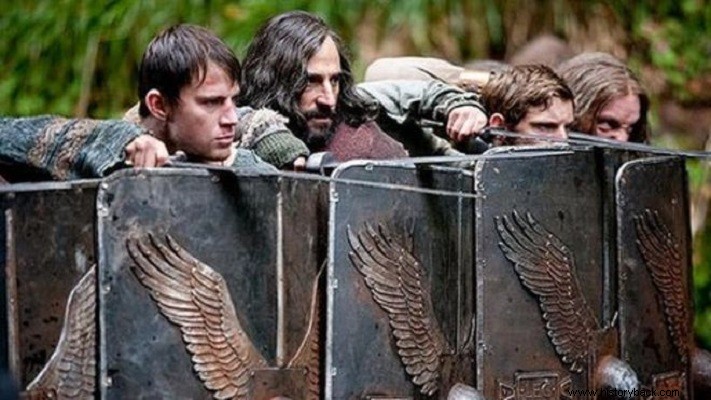
The disappearance of the 9th Roman Legion is still an unsolved mystery. Legio IX Hispana, also known as VIIII Hispana is unknown when exactly it was formed. However, in the 1st c. e.g. appears fighting in the Social War (90 BC).
However, some historians argue that the legion was formed by Pompey in Spain in 65 BC. Later he participated in the operations of Julius Caesar against the Swiss, but also in the civil war against Pompey. He fought in Durres and in the catalytic battle of Pharsalus, but also in Africa against the Pompeians.
The legion was disbanded after the end of the civil war, but was probably reorganized by Octavian to fight against Sextus Pompey in Sicily and fought against Mark Antony. He was then sent to Spain to fight the Cantabrians. There he also received the nickname Hispana (Spanish). He then assumed guard duties on the Rhine and then in Pannonia (province of the empire that includes the territories of today's countries, Hungary, Serbia, Croatia, Bosnia).
In 43 AD the legion was transferred to Britain taking part in the campaign of Emperor Claudius. In 50 AD fought against the British under the leader Caratakus while establishing a fortified camp that developed into the city of Lincoln, England.
The period 52 -57 AD participated in operations against British rebels. During the revolution of the British queen Boadicea, her infantry was also destroyed. Only the horsemen escaped. Nevertheless, he reorganized from the start and fought again against the British in AD 71-72. In fact, he created a new fortified camp in today's York.
He participated in the campaign against the Calydonians (Scots) in AD 82-83. and in the great battle on Mount Gropius. In this battle the Romans literally destroyed the Caledonians. The last evidence of the legion's presence in Britain dates to 108 AD. and derived from an inscription found at York.
There is some evidence that the legion, or at least elements of it, were moved to present-day Holland and Aachen in present-day Germany. Some scholars argue that the legion was stationed in the area as late as 130 AD. Others argue that the legion was renamed VI Hispana. However, there are no serious indications to support this view.
The disappearance
Then the legion suddenly disappears. Its disappearance occurred between 130 – 197 AD. The most basic theory about its disappearance states that the legion was destroyed in Britain fighting with the local people. The German historian Mommsen argued that the legion was destroyed at York under the emperor Hadrian.
Mommsen bases his view on a reference to the Roman historian Frodo who wrote in the time of Marcus Aurelius. However, there are no archaeological findings or written evidence to substantiate this view. And it is absurd to suppose that such a disaster occurred which was not recorded by any historian of the time.
Consequently new theories about the fate of the legion were adopted. One of them claims that the legion was destroyed in Judea during the revolution of 132 AD. But no Roman records and no ancient historians mention such a thing.
Another theory holds that the legion was destroyed in the war against the Parthians in the East. A continuation of this theory holds that the legion was captured by the Parthians and its men were sent by them to fight on the eastern frontier of their empire, with the Romans eventually reaching as far as China. However, this theory cannot be confirmed either.
The mystery of the legion's disappearance, however, has raised interest beyond historians and writers and filmmakers. In the disappearance of the legion he mentions the novel "The Eagle", which was also made into a motion picture. This is where the video below comes from.
